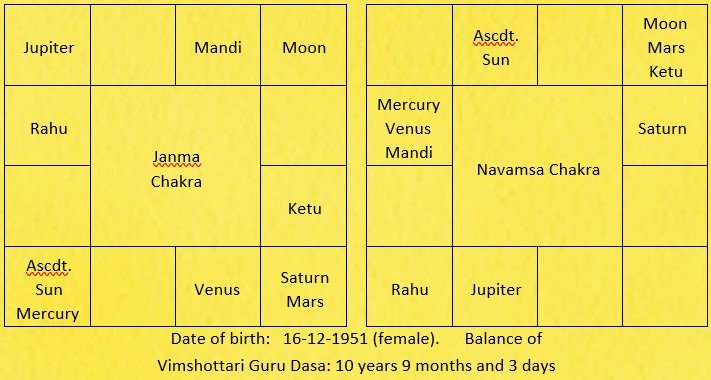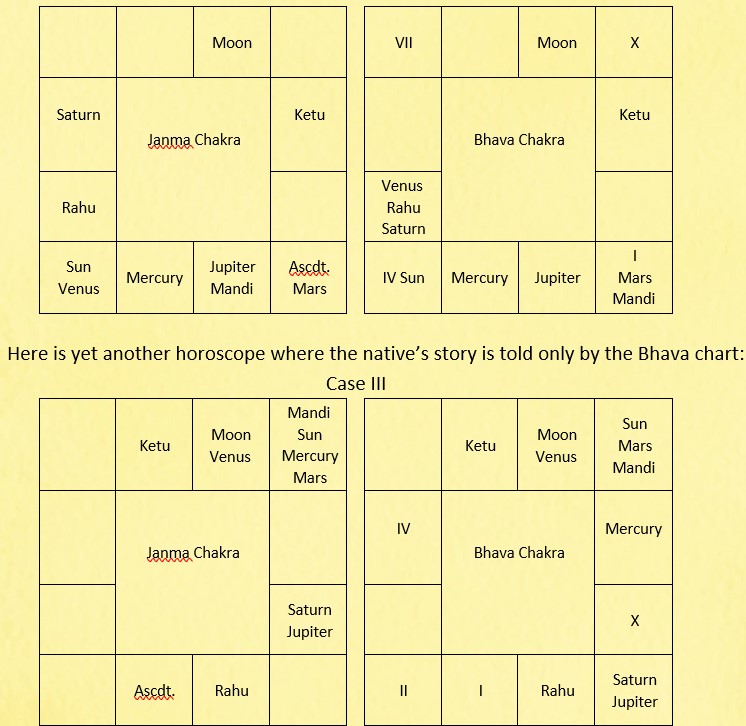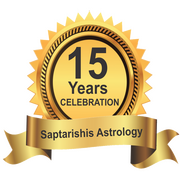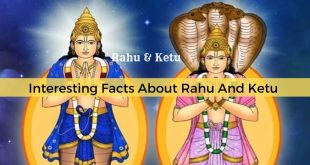Related Articles
SA Volunteer: Manohar Mulchandani
(Taken From Astrological Magazine Of Raman Saheb, May 1977 Issue)
The rumor as per one of his students goes like this that he had many nadis in his possession including Dhruva
Nadi and his family burnt and threw the books from his library after his death. He was an astrologer to many Cabinet Ministers and could predict events to the day. The unfortunate part is every year in January his students get together in a particular ancient city known for its temples and conduct a seminar, due to lack of resources we have not been able to attend it and beg his students to reveal his techniques, as not a single of it has survived in print with the English reading astro community. Some astrologers in the north know of his techniques but refuse to write about it or reveal it. – SA Publisher]
Trealiz ed by Seers or Yogis (Rishis) and handed down to us through traditional he Vedas are the unsurpassable treasure-trove of all encompassing wisdom
method of vocal recitation. Vedangas are supplementary literature designed for implementing the fundamental principles enveloped in the Vedas. These are Shiksha (pronunciation and euphony), Chhandas (prosody), Vyaakarana (grammar), Nirukta (glossary), Kalpa (ritual rules), Jyotisha (astronomy and astrology).
Jyotisha or Astrology, the science of sciences, is also known as Vedachakshu or the eyes of Veda Purusha, the Veda personified. This is interpreted as Pratyaksha Shastra in as much as the roof of astrology or Jyotisha rests on the props of eternally existent foundation of the Sun, the Moon, planets, asterisms and zodiacal signs (Rasis), as given in Shastras:
अप्रत्यऺाणी शास्त्राणी वििधष्टे षे ुकेिलं ।
प्रत्यऺम ज्योविष् ं शास्त्राचद्राकैंयत्रसावऺणौ॥
Jyotisha is the intricate but integrated system of diagnosis of the maladies of natives, or times or incident arising out of poorvajanma (previous births) and praarabdha karma (operative karma). Such maladies are, of course, responsive to prayers, oblations, rituals, recitations of hymns and mantras and wearing of gems, stones and kavachas. Predictions based on such a perfect science can never afford to go wrong or become incorrect or even, casually, inaccurate.
Then why do predictions ever go wrong or become incorrect or at least inaccurate? The answer is simple.
In this present computer century, top-class technicians and scientists unanimously and unreservedly admit that the accuracy of answers or solutions offered by a computer of the electronic brain depends entirely, solely and fundamentally on the accuracy of the data fed to it. Mutatis mutandis, this rule verily applies to interpretation of a horoscope, word for word. Predictions made on scientific analysis of planetary and other positions, by a qualified and competent and devoted astrologer, will never go wrong or turn out incorrect unless the basic data furnished or presented to him are inaccurate, incomplete or unreliable. It is understood that the competent astrologers analyze horoscopes as minutely as required with special reference to (1) Residential strength of planets in various Bhavas or houses; (2) Grahabala (planetary strength) made up of Sthaanabala (position at strength), Digbala (directional strength), Cheshtabala (movement strength), Kalabala (temporal strength), Naisargika bala (natural strength) and Drishti (drik) bala (aspected strength); (3) Bhavabala comprising of bhaavadhipati bala, bhava dig bala and bhava drishti bala; and (4) Ishta/Kashta phala; the astrologers must possess the siddhi to make accurate predictions.
Let us now go deep into all these details:
The basic data on which an astrologer may be able to construct an accurate horoscope are (1) place of birth (2) date of birth and (3) time of birth.
Place of Birth: The astrologer is seldom concerned with the name of the place of birth; but he is immensely concerned with its Rekhaamsa (longitudes) and Akshaamsa (latitudes). These are, respectively, required for arriving at the local mean time of birth, the sunrise and the sunset, Rasimana or duration of each Rasi and the rising sign at the given time or time of birth, as also dinardha (half day) chaara and natha. If the place of birth is a small village its distance and direction from the nearest town will help the astrologer much.
Date of Birth: India is a country of varieties. In this unique country we have a number of eras or prevailing years in vogue at any given time like Samvatsari, Vikrama Shakaabda Souramaana shastyahsamvatsa, Kollam, Hijri and so on. The name of the month or its total duration is, again, not standard. Certain areas calculate the month from Shuddha Prathama (the 1st of the lunar bright fortnight) to Amavasya (the New Moon) while some reckon the month from the entry of the sun into any given Rasi. In some areas Tithi (lunar day) is given to indicate the date of the month. Again, the reckoning of the day in India is from sunrise to sunrise while under the Gregorian system it runs from midnight to midnight. What is known as Kartika Maasa in Tamilnadu may be Maargsheersha in another part of the country. It is therefore necessary to ascertain, first of all, the exact date of birth and also to give the equivalent date in terms of Gregorian calendar or corresponding to panchanga or ephemeris used by the astrologer.
Alternatively it is advisable to give the date of birth in terms of what is known as Saka by the Government of India so that the method of reckoning the date is, at least, uniform. Let me illustrate this by an example.
A horoscope was taken up for predicting longevity and the particulars given by the native were as follows:
Place and Date of Birth: Cochin (Kerala), 14-3-1909. Time 12 mts earlier to sunrise.
Balance of Jupiter Dasa: 8 years, 3 months and 3 days. Equivalent: Kollam 1084, Meenam 1st, half ghati before sunrise: Visakha Nakshatra.
On checking, as a prelude to venturing prediction, it was found that according to ephemeris, the Sayana Moon was in 242o 9’ at 5-30 p.m. on 13-3-1909. It was therefore in Anuradha 3rd at the time of birth. But the longitude of the Moon for leaving a balance of Jupiter Dasa of 8 years, 3 months (in Thula or Libra Rasi) should be 201 o 55’ which balance of Dasa is incorrect on the face of it.
On referring the matter back, two different horoscopes were furnished for the same nativity, calculated according to two different panchangas, as prevailing in the locality:
I | II |
Date of Birth |
|
14-3-1909 | 12-3-1909 |
12 mts. before sunrise at Cochin (this panchanga shows the Sun’s entry into Pisces on 13th) | 12 mts. Before sunrise at Cochin (this panchanga shows the Sun’s entry into Pisces late on 12th) |
Nakshatra |
|
Jyeshta 1st | Vishakha I |
Balance of Vim. Dasa at Birth |
|
Mercury 13-11-4,30 | Jupiter 12-8-0. |
The above revised data are also at variance with Sayana positions and Nirayana positions of planets according to standard panchanga and ephemeris.
Time of Birth: The next important data, which must be very accurate, relate to the time of birth. Here again there is a very serious controversy in reckoning the time of birth. Three important timings are advised by Satyacharya, the author of Jataka Satyacharya (Adhyaya I, Sloka 6), viz., Garbhaadaana (conception) Kaala, Sirodaya (head coming out of the womb) Kaala and Bhoopatana (the whole child out) Kaala. The first two cannot be decided accurately for obvious reasons. Hence he seems to advise the reckoning of the third timing, i.e., Bhoopatana Kaala as the birth time. Other schools opine that Jalodaya (oozing) Kaala and Rodana (cry) Kaala should also be taken into account. A modern school of thought canvasses that the time of severing of the navel cord should be taken as the birth time as it is the actual time of separation of the child from the mother’s womb. Experience shows that taking the birth time given by the consultor, as approximate, and fixing the exact time of birth keeping in view the weekday, stree-purusha kaala and the prevailing tatvas (main and antara tatwas) and the sex of the child will give as accurate a birth time as possible for astrological purposes.
In this connection the astrologer should remember one thing: the least division of the (Bhackakra) Rasi or Udaya (rising) Lagna, in vogue, is Naadi Amsa which is 1/150th part of a Rasi or 48 seconds of time. According to Naadi-granthas, every child born at an interval of 48 seconds of time will have a different pattern of life here (herebefore and hereafter). It is, therefore, absolutely imperative that the birth time should be rectified before venturing prediction. A number of methods including calculation of Praana Lagna are in vogue for rectifying birth time. The most common ones are discussed below:
Prasava Jaataka Soochakam enunciates that if Saturn is in the 5th or the 9th Navamsa, the child will cry loudly during or after birth whereas the child will be incapable of crying if Saturn was in the 1st or the 4th With Saturn in the 8th Navamsa, the birth will be a case of placenta previa while Saturn in the 6th
Navamsa indicates birth under suffocating circumstances. In the 2nd Navamsa, Saturn indicates delivery when the mother was unconscious while in the third Navamsa he indicates that the fluid has entered the child’s belly.
The planetary combinations capable of determining the birth ascendant are generally as follows:
- If the Moon or the planet disposited by it is in the 5th or the 9th from Lagna in Janmachakra (natal chart) or Bhava (house) chakra, Lagna can be said to be correct.
- If Janma Lagna and the Moon Rasi be one and the same, then this combination is counted from the 7th of the Moon Rasi, and Lagna is certain.
- If the child’s Moon Navamsa happens to be in Kendra from the Navamsa Moon in the mother’s horoscope, the child’s Navamsa Lagna can be said to be correct.
- If the Nakshatra paada (quarter) of the child’s birth happens to fall between 37th and 45th quarters of the mother’s Janma Nakshatra or its 9th or the 9th from the 9th, then the birth time may be said to be correct.
Dr. B. V. RAMAN, in his Hindu Predictive Astrology, has very ably suggested a number of methods for rectifying the birth time and I have found these to be quite accurate.
Panchanga: The next aspect which requires careful consideration, as a prelude to venturing prediction, is the use of a correct and reliable panchanga or standard ephemeris. Here again a number of panchangas are being published in India both under Suddha Vaakya system and under Drik Siddha (Nirnaya) system. The Ayanamsa taken into account by panchangas too vary considerably. A successful astrologer is one who recalculates or checks up the horoscope under consideration to the Ayanamsa he usually uses and to the norms of the panchanga he usually follows. This would, no doubt, involve a lot of additional work; but if predictions are made keeping this aspect in view, there is very little possibility of predictions going inaccurate or incorrect.
Navamsa Chart: Yet one more important aspect has to be kept in view by the successful astrologer if he wishes the predictions made by him to be near accurate.
The strength of a planet lies in its Navamsa, as the dictum goes, ग्रहाणाम ्अशकं ् बलं.
The lord of Navamsa of any planet, of course subject to the respective shadbalas, goes a long way in regulating the temperament and/or in fortifying the benefic or malefic aspect of any planet concerned.
A vargottama planet or a planet attaining uchcha sthaana (exaltation position) or trikona sthaana (trinal position) in Navamsa plays very purposeful role in the life of a native. A number of yogas are attributed to the position of planets and certain Bhavaadhipatis (house lords) in Navamsa. A Navamsa chart attains its place of importance in the interpretation of horoscopes because it is the only varga chart which takes into consideration all the three aspects of horoscopy, viz., Rasi (sign), Graha (planet) and Nakshatra (constellation). In South India it is a practice to first construct the Navamsa chart before even constructing the Rasi chart and Bhava chart.
Let us consider how a Janma Chakra (natal chart) becomes deceptive on the face of it and Navamsa Chakra tells the real story. (I will discuss these in detail later).
Case I

Bhava Chakra: Next in importance to render predictions as accurate as possible is constructing the Bhava Chakra or Chalita Chakra.
Janma Chakra assumes that each Rasi is of 30o and in constructing this chart the latitude of the place of birth is not given full consideration. Again, it is a fundamental rule of astrology that a planet near to Bhavamadhya (cusp) in poorvabhaga (or eastern half preferably) is more powerful than the one in the Aarambha (beginning) or Virama (ending) sandhis (junctions). Further, as the latitude of place of birth goes farther and farther from the terrestrial Equator the chance of more than one Bhava falling in one house is rated higher. Therefore unless the Bhava chart is constructed and the planets are placed in them correctly predictions made by an astrologer are bound to go wrong invariably. Let me express this through an example.
A native, born in 11o N latitude, at about 1 a.m. of December 18, 1932, has the following charts.
Case II

Unless Bhava Chart is constructed, as in Case II, predictions given about, say, Putra Bhava, are prone to go wrong or atleast prove inaccurate. The native has a number of daughters but no sons. It is predicted that he will be blessed with a son during September, 1977.
Mandi: One more important aspect which is normally not considered in various parts of India is the position of Mandi. According to various texts, Mandi plays a vital role in deciding the Poorva janma punya (merit accruing due to act in previous lives) of a native as also his outlook, physical and mental make-up. To ignore such a vital element is to contribute to inaccurate prediction.
Should an astrologer consider all these aspects, among others, very carefully, predictions can never go wrong. – 237.
Learn Astrology: Join Our Upcoming Astrology Classes — Click Here
Learn Astrology: Join Our Recorded Astrology Classes — Click Here
 Saptarishis Astrology Magazine Into Creating Astrologers
Saptarishis Astrology Magazine Into Creating Astrologers






